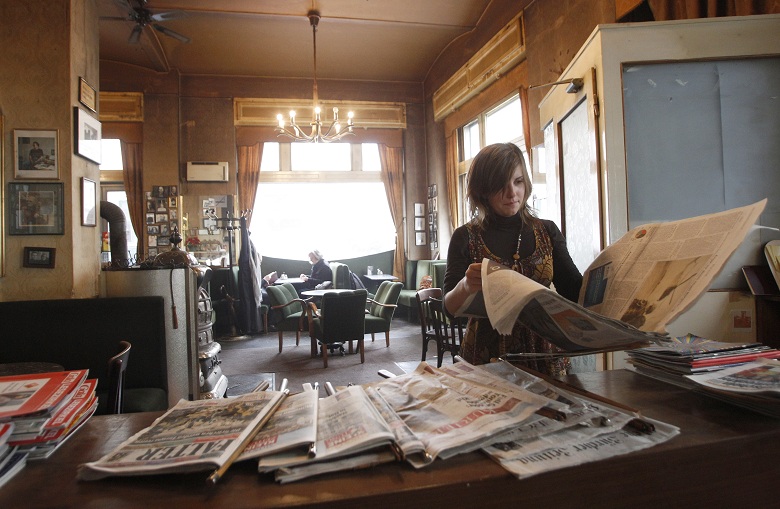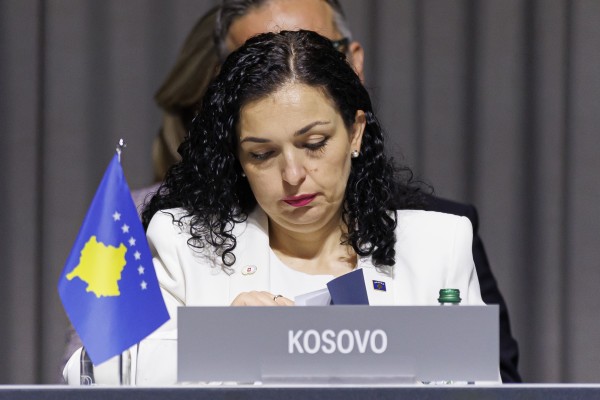Lesen Sie diesen Artikel auf Deutsch
While the topic of online abuse – against journalists, but also against third parties – may have gained increased media attention in 2016, Austrian media outlets have struggled with the problem for some time now.
In recent years, all media outlets with a digital presence have had to think about how they deal with these challenges. In addition to moral considerations, such as protection of employees and third parties, and legal responsibilities – according to Austria’s media law, media outlets are responsible for comments posted on their platforms – there are also practical considerations. For journalists, especially women journalists, but also community managers, online abuse poses an additional psychological burden that can have a negative impact on their life and work.
As do individual journalists, media outlets have methods for dealing with concrete abuses and the abstract danger they pose. IPI spoke with selected large and small media outlets in Austria about how they organise their community management, what structures they are building and how they assess the challenge overall.
Responses varied with the size, affiliation and composition of the audience and the resources used. However, three points of commonality were noted.
In the first place, editors – but also the executive floor and community managers – know by now which topics will elicit a strong response in the form of problematic comments. The issue of refugees in particular has been the source of much of the abuse during the past one-and-a-half to two years. There is much overlap in terms of how media outlets cover controversial issues, although affiliation and audience also play a role.
“In our case, Islam is an extremely emotionally charged topic,” Aleksandra Tulej of Biber, a magazine geared toward immigrants to Austria, notes.
An additional observation is that the targeting of journalists is not random: certain writers are singled out.
“We have about three or four journalists who are attacked, especially in the comment sections,” Stefan Kaltenbrunner, editor-in-chief of kurier.at, the online version of the daily Kurier, says.
Christian Burger, community manager for the daily Der Standard, offers a similar view, adding: “Often, something a journalist wrote will be held against him for years.”
A final point that became apparent in the conversations is that editorial decisions often play a role in terms of the form that the abuse takes. The more prominently an author is represented, the higher the chance that he or she will be attacked personally. In cases where the editorial board appears as the author or where the authorship is not prominently displayed, the attacks become more general.
“In our case, few individual journalists are attacked, but rather the medium as a whole,” Clemens Pilz, head of community management at heute.at, the digital edition of a popular free daily tabloid, observes. Increasingly, the entire industry is being attacked under catchphrases such as “Lügenpresse” (“lying press”).
Measures
All of this is not entirely new. In the last few years, Austrian media outlets have gathered a set of lessons learned to deal with the challenges as best they can. Several of these are described in general terms here.
First, professional community management is not a cure-all, but it does help. Der Standard and its User-Generated Content Team of nine people – which deals not only with forum support, but also with guest comments by users – is a pioneer in Austria and a reflection of forum size and resources at the paper. At heute.at, three employees are responsible for community management. But most other outlets are also in the process of professionalising their relevant departments or have already done so.
Still, community management is an expensive investment and media outlets can only make available a limited amount of resources. “It’s a question of manpower, of course,” Kaltenbrunner says.
At heute.at and kurier.at, editors take on community management tasks in the off-peak hours, which means that they are unavailable for other duties. Smaller media outlets such as Biber often do not have sufficient resources to allow a staff member to dedicate his or her time solely to this task.
Second, structures can help. If journalists and department heads know in advance which articles are problematic, and if they are in close exchange with community management, then they can better prepare themselves for a potential wave of comments. Such a communication system is already in place at larger media outlets. Communication is less systematic at smaller ones, but because of the shorter distances between offices, staff are usually well aware of what could happen. Overall, structurally planned procedures make it less likely that media outlets will be “surprised” by waves of abusive comments.
Third, discussions can be controlled to a certain degree through intervention. At Der Standard, editors are encouraged to take part in the discussion forums. Other media outlets are following suit. A dual strategy lies behind this move.
“This way we demonstrate to our users that we appreciate their opinion,” Burger says. But it is also a way of letting users know that the outlet is keeping an eye on the forums and that no one there is acting unobserved.
Fourth, there are – in addition to manual intervention – technology-based solutions available. Filtering software that filters out posts containing certain words for manual review is used in almost all major media outlets. At kurier.at, the forums are generally closed between 10 p.m. and 6 a.m., when no community management takes place. At Der Standard, technical considerations go further still.
“Up until now we put considerable energy into making the small, destructive part of our community less visible,” Burger says. “Now we want to concentrate on highlighting the much larger, constructive part.”
One problem with this technical oversight is that it can only be applied to the media outlet’s website. The more the discussions move away from comment sections and onto social networks, the less control media outlets have over them. On Facebook, comments can only be deleted or hidden after they have been posted, thus requiring intensive live monitoring.
Fifth, it is important not to leave employees alone with the problem. This applies not only to journalists – who are naturally at the centre of attention because they put their name on critical stories – but also to community managers themselves. There are many reports of individual managers who are not able to withstand the pressure and decide to leave the company.
“The entire industry must learn to communicate directly with the community managers and the social media managers and not leave them alone with what they do all day,” Kaltenbrunner says. This, he notes, is a big task that still lies ahead of everyone.
As is the case with the journalists concerned, community managers usually try to help one another informally, for example, by exchanging views on particularly bad postings. Formal structures and means of communication are generally still lacking in most media outlets. This is, of course, not only a question of will, but also of resources. All in all, structures for formal support are still underdeveloped in the Austrian media.
Sixth, there are points at which even the best technical and legal measures can no longer help.
“At kurier.at, we have a relatively strict registration procedure with telephone numbers,” Kaltenbrunner says. But he suggests that a certain amount of abuse cannot be prevented and does not even believe that stricter laws would help.
“For three-quarters of a year now, we have been reporting everything that is even remotely illegal,” he told IPI in an interview in December. “We have now reported some 40 to 50 comments to the public prosecutor. But you can’t prevent everything.”
At the same time, reports of responses to online attacks give rise to the impression that authorities do not react to all cases with equal speed. While prominent journalists such as Florian Klenk or Christa Zöchling have highlighted very quick responses by authorities in their cases, Tulej, from Biber, tells a different story. She says that after she reported one person who repeatedly insulted and threatened her via various channels, she received no reaction from the authorities for a lengthy period of time.
Conclusion
The Austrian media have improved in the area of combating online abuse over the past months and years. Newsrooms have increasingly recognised the problem and have become – perhaps because of the increased attention the issue has received – better able to impress upon senior management the urgency of the matter.
Nevertheless, much needs to be done. Those in positions of responsibility are largely aware of this.
“We still have massive potential for improvement in all aspects,” Kaltenbrunner says, speaking for the entire industry.
Especially in small media outlets, editors have to rely on informal measures, not because the will is not there, but because the resources are not. Even within the larger media outlets, there is a lack of formal structures to deal with the problem. Lastly, the increasing importance of Facebook adds a new dimension of difficulty, as media outlets’ internal technical solutions do not apply to external platforms.



